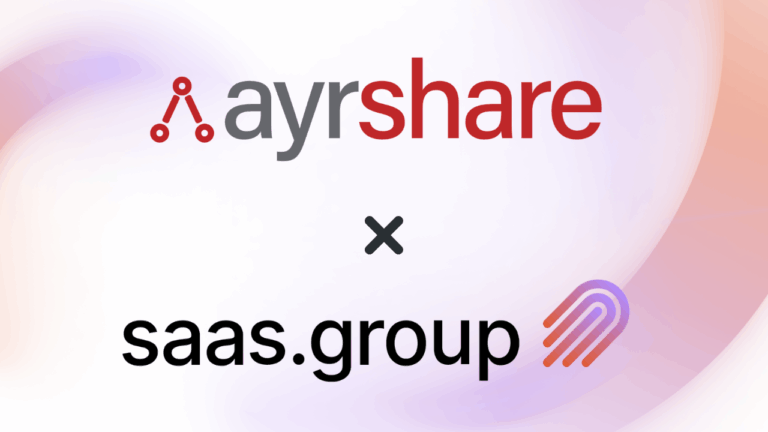Whether you’ve been building with an exit in mind all along or came to a decision to sell out of the blue, be ready for a new adventure that acquisitions are. Each one is unique and while there’s no plug-and-play, one-size-fits-all kind of playbook, having acquired 18 brands, we’ve narrowed it down to 5 unavoidable steps that will get you closer to your dream exit.
Decide why you want to sell
This is the step that isn’t discussed much. Who cares, right? Your numbers are good and there’s still a lot of potential to grow. Why would anyone want to know that you’ve burned out and would rather work on a different product that you got excited about?
Well, acquirers care. Most of us do, anyway. Some of the reasons to sell the business we hear the most about are:
- Taking chips off the table. Having all your eggs in one basket might feel a little intimidating. And the desire to diversify and invest in other assets is a very valid reason to start looking for an acquirer of your business.
- Retiring. As simple as that. You’ve had an awesome run with your company, you’re proud of the legacy you’ve built and now it’s time to spend time with family, take that year-long vacation you’ve dreamt of, or simply garden. And if you’d rather be growing tomatoes instead of going through a 2-year earnout period, your acquirer would want to know that to offer the fastest exit possible.
- Not seeing a way to grow. The next big win is right around the corner but you don’t really have the resources or expertise to take it to the next level. This is perfect grounds for a long-term partnership with a company that has exactly what you’re looking for and has already worked with similar cases. This way, founders may even find it the most beneficial to stay with the buyer after the acquisition to work on their beloved product and be able to learn how to scale it further.
- You’re a starter, not a scaler. We all have different sets of skills and granted, anything can be learned, maybe it’s just not what you’re looking for at the moment. You love the grind and creating something out of nothing. Would you be happy staying with the acquirer long-term realizing that? No one is interested in having a person miserable at their job, so having this information helps your buyer come up with an exit strategy that matches your goals.
Prepare your business for sale:
- Ensure the best valuation
- Get your financials and documentation in order
- Address legal requirements
- Have data room ready
- Work on transferability
Culture fit, efficient deal-making, and clear communication are great but it’s usually the price that matters the most. And there are a few things you can take care of prior to the acquisition to ensure getting the best return on your years invested in business.
Metrics that affect SaaS business valuation are Monthly/Annual Recurring Revenue, Net Revenue Retention, LTV to CAC ratio (lifetime customer value to the cost of acquisition), TAM (Total Addressable Market), and YoY Growth Rate.
Bear in mind that even after getting all the numbers, each business is evaluated individually taking into account its unique position on the market, dependability on the founder’s brand, strengths and weaknesses, and much more.
Ensure you protect your intellectual property from the outset to maintain your competitive edge and steer clear from potential consequences for both you and your business.
Focus on reducing churn and truly understand your customers by providing opportunities to leave feedback and communicate proactively with you. Improve your customers’ onboarding and overall experience to turn them into ambassadors and promoters.
Your differentiation strategy matters! Tech rarely allows you to stand out in the competition, at least not for long. So finding what makes your business unique and positioning it strategically can increase your chances for good valuation.
Having all this information in the data room helps your potential acquirer get a good understanding of your situation in a timely manner and see potential ways to grow your business further. If at the same time you’ve also been working on making sure you’re no longer crucial for the day-to-day operation of your business, it’s a big green flag for the buyer. Transferability is important. If it’s the founder who’s been working on the vision, product development, and customer support 18 hours a day for the past 4 years and it’s only them who have all the bits and pieces together neatly stacked inside their head, well, the odds of the business falling apart after they’re gone increase dramatically. And no acquirer out there wants to figure out how to make it work without that one and only stakeholder.
Find the right buyer: ensure cultural fit, do buyer due diligence
Who wouldn’t want to buy a business like yours? You’ve put all the blood, sweat, and tears into making it great, so getting the right buyer shouldn’t be a problem. Well, this is only partially true. Even if you’ve got all the leverage and your numbers are amazing, figuring out the right fit is no small deed.
Are you selling to a strategic buyer in hopes to get the highest valuation? And being featured on TechCrunch as “acquired by Google (Microsoft/NVIDIA/ your option)” doesn’t sound too shabby either? Take a look at the biggest players in your space, prepare your undeniable offer, and go for it.
Do PEs look like a good fit? Yes, maybe a big influx of cash is exactly what your business needs to become the rocketship it was always supposed to be. It might be hard to work with that kind of growth, and the economic situation doesn’t suggest the fastest returns on this strategy. But hey, what is life if not a big gamble?
How about those programmatic acquirers and holdcos like saas.group? Run by SaaS operators who opt for more sustainable growth and slower but steadier returns. Might not be the most exciting ride but it is a great opportunity to see your product and team go further. And since deal-making is what they do on a daily basis, you can expect the easiest and fastest acquisition process of all.
Now that we have gone through some of the types of acquirers, how do you determine the fit? One thing we always suggest at this stage is checking out the previous deals. Numbers, terms, times, whatever you can find. Connect with the founders who sold to this buyer already, what are they saying? Website testimonials are great but having a 1-1 with the person gives you a totally different perspective. And an opportunity for your gut to speak, too.
Check out their social media and podcast/interview appearances. You can usually get a pretty good idea of the company culture and determine whether or not you’d be comfortable speaking/working with these people. Doesn’t give you the most in-depth knowledge but works great for the first vibe check.
Prepare your alignment/misalignment sheet. You’ve figured out what your dream exit looks like, right? Now based on the previous deals your potential acquirer had, what falls under your idea of a dream? And what is something you can absolutely not look past?
Due diligence: financial, tech, legal, HR
Due diligence is a meticulous process where you’ll be asked for all kinds of information, and have to dig up contracts you didn’t expect to see ever again with the potential to give you a couple of micro heart attacks because of yet another skeleton in your closet you forgot about.
Here’s a list of what buyers tend to ask for:
- financial statements
- customer contracts
- growth projections
- intellectual property documentation,
and any other relevant information that will demonstrate the potential of your business.
Make sure you go at it with a cold head, lots of patience, and a good lawyer. And not just your second cousin who’s been helping you create your Terms and Conditions page. Find an M&A lawyer who’s been doing similar deals and knows what acquisitions are about. Ask your network for a potential introduction or then again make use of platforms like DueDilio and similar ones.
Even the fastest due diligence takes time. It requires a fast reaction to make sure you’re addressing all the issues that may come up. So at that point, if you haven’t made yourself redundant for your team and day-to-day operations, you’re in for a wild ride. One of the things that’s being assessed during the due diligence is the business’s ability to operate without you, so (turning on the broken record here again) taking care of its independence and transferability is something to consider early on.
Figure out the steps for a post-acquisition process
Did you think the process was over once you signed the papers? Well, with all honesty, that might not even be the middle of it.
Every M&A deal starts with a good intention. Yet, failure to integrate a business remains one of the top reasons for the acquisitions to fail. Hopefully, you’ve been able to discuss the terms of your integrations with your buyer even before you started the selling process but if not, there are still a few things to do to help this.
First of all, it’s all about people. If the diligence process was a lot about your data and metrics, this part of the process is between human beings. So, transparency matters!
Make sure all the steps are explicit instead of implied. Create a plan together with the integration leader. Your expectations and desires should be (honored, yes) first of all, heard.
It starts with leadership and ends with leadership but there are a lot of people in between and getting the information through to them is important. Even the least invasive acquisition process means change. Layoffs, product roadmap alterations, communication with the customers, processes, and culture, expect at least some level of adjustment on all fronts. And it’s not to be rushed because rush creates hassle and hassle usually makes messiness and mistakes. So, hopefully, both you and your acquirer have the listen-first mindset to be able to hear out the points of the other party and act on them.
How does post-acquisition integration work at saas.group?
- No big scary rebrand – we always keep the name and the identity of the company intact.
- No stripping apart the organization into a functional model – every brand remains standalone with its unique processes. Although lately, we’re working more towards introducing more unified tools for the teams, we’re also mindful of the processes they have established over the years.
- Generally, no forcing square pegs into round holes! – if we buy a company, we trust that the founders and the team know the way they operate best. They’ve come this far to be successful and ultimately attractive for us to welcome into the family. So, why change fundamental things? We act as advisors but never push a specific agenda onto our brands.
saas.group‘s approach to post-merger integration stands out for its commitment to founder-friendliness and brand autonomy. By preserving the unique identity of each acquired company, and acting as custodians rather than imposing directives, we aim to support brands in their natural trajectory while offering valuable advice for optimization. By minimizing disruption for both founders and their teams, we try to ensure the most positive experience for all.
Navigating the acquisition process can be complex, but it becomes a way less scary adventure with the right preparation and understanding. By knowing why you want to sell, preparing your business for the process, finding the right buyer, and ensuring clear collaboration for a smooth post-acquisition process, you can achieve your dream exit.
If our values speak to you and resonate with how you do business, get in touch. Discuss your options with our M&A team: Dirk (dirk@saas.group) or Pavel (pavel@saas.group). Learn more about how we grow acquired brands on our blog and podcast pages.
Table of Contents
Weekly newsletter
No spam. Just the latest news and articles from the world of SaaS and Acquisitions.




